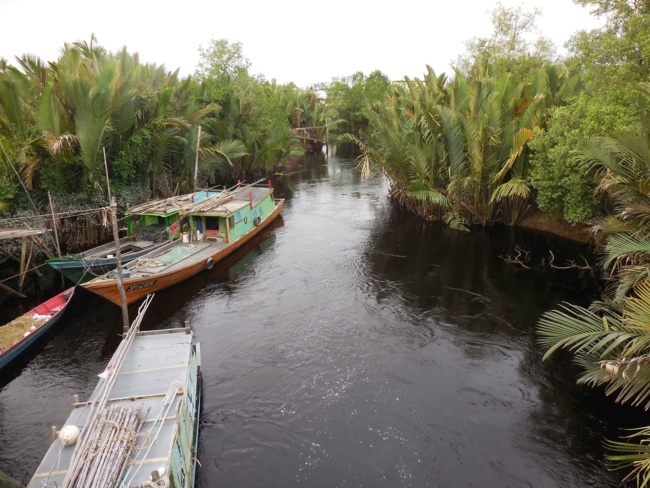Why "enhanced weathering" – and why tropical peat soils?
Weathering is a natural process in which CO2 is bound by a chemical reaction with rock and water and thus removed from the atmosphere. "This happens extremely slowly and only causes a significant reduction in atmospheric CO2 when viewed over thousands of years," says Alexandra Klemme. For the method of enhanced weathering, rocks are ground up. "This increases the surface area where the chemical reaction takes place, which in turn accelerates the weathering process. Spreading the pulverised rock – for example on agricultural land – is being discussed as a possible method to reduce atmospheric CO2."
Warm and humid conditions further accelerate weathering. That is why tropical peatlands are among the possible targets for "Enhanced Weathering". About half of these peatlands are located in Southeast Asia. They store huge amounts of carbon and absorb CO2 from the atmosphere in their natural state. Today, much of these peatlands have been converted to agricultural land. "In most cases, this is associated with draining and leads to peatlands being transformed from CO2 sinks into CO2 sources," explains Klemme. With the use of 'Enhanced Weathering' in these regions, it is hoped to counteract these CO2sources. "In addition, enhanced weathering would increase the pH value in the acidic soils. The agricultural industry would welcome the method since it also it helps plant growth."
Increased pH destabilises peat soils
Alas things are not as simple. Raising the pH by using "Enhanced Weathering" would destabilise the peat soils. As Alexandra Klemme found out, the method not only increases CO2 emissions from peat soils, but also the input of carbon into rivers and thus CO2 emissions from rivers and coastal areas. The research was based on data measurements and sampling in Indonesian and Malaysian peat rivers carried out by IUP, ZMT and Swinburne University over the past 10 years. The study shows that an increased pH value could lead to a total of CO2 emissions that would exceed the expected CO2 uptake through enhanced weathering. "Hence the method must ruled out," says the Klemme.
Original publication:
Klemme A., Rixen T., Müller M., Notholt J., Warneke T.2022, "Destabilization of carbon in tropical peatlands by enhanced weathering", Communications Earth & Environment, https://doi.org/10.1038/s43247-022-00544-0





